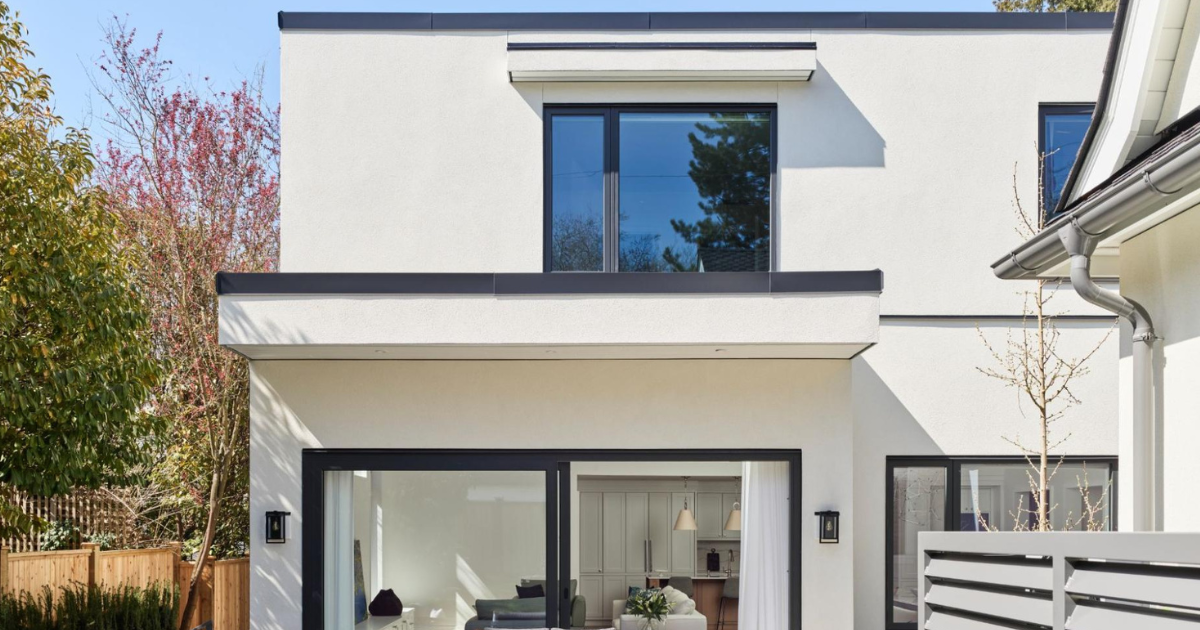Most popular home designs of 2024 and trends for 2025

As a $2.1 billion industry, interior design is valued by many Canadians for creating inviting, comfortable spaces in their homes. In both design and architecture, seasons come and go and trends fluctuate.
Design trends
For example, Joy Chao, lead interior designer at Vancouver’s JHA Architecture + Interior (JHA), says they’ve historically done more traditional design, and the recent trend towards contemporary for both interior and exterior is “a little unusual.”
Many of JHA’s clients have found contemporary a bit cold but Chao notes, “It’s a matter of seeing it more and their eye getting used to it. They’ve discovered you can still feel very comfortable and cozy. The more exposure, the better it looks.”
Daniel Kocur, interior design and capital project manager at InterRent in Montreal, agrees. “There’s this cozy minimalist aesthetic, keeping spaces lively and visually unencumbered.” He explains that people are looking for “clean” interiors—both within their own homes or in common spaces of multi-unit buildings. However, “There’s still warmth, texture and layering different materials, colours and finishes.”


Photos: InterRent
In urban centres with less space, there’s more of a multifunctional necessity than in rural areas. “Compact living is not going anywhere,” Kocur asserts, since, “Price per square foot is expensive to build.” It’s about maximizing square footage and versatility in an “out of sight, out of mind” way.
He says the intent is to be custom while stretching the client’s dollar. “We’re still experiencing high costs…so you have to be creative to offer the best solution possible.”
Architectural trends
John Henshaw, JHA’s principal architect, notes building multiple homes on a single lot is a big trend this year.
He also points out people are more aware of exterior building envelope materials. Mainly due to wildfire concerns, particularly in Alberta, his clients choose fireproof exterior cladding. This might be stucco or cement board rather than cedar or other wood siding (which can also be expensive). Plus, for similar fire safety reasons, clients are asking for sprinkler systems.

Photo: JHA Architecture + Interior
In addition, windows are getting bigger. “People want natural light as much as possible,” Chao observes. “So the energy rating of the window is really important to us. We’re seeing more triple-glaze.” She says the look of large windows tends to lean toward a more contemporary design, which fits with the trend JHA is seeing.

Photo: JHA Architecture + Interior
Sustainability and eco-friendly practices
Kocur’s firm considers how to sustainably and responsibly repurpose underutilized office buildings (as a result of the pandemic). “We’re very conscientious of how we demolish and renovate, making sure that whatever we remove doesn’t end up in a landfill.”
In terms of materials, it’s all about sustainable products like energy-efficient appliances, low-VOC (volatile organic compound) paint and LED lighting. He says these things are more readily available and cost-effective, second nature to most clients and demanded by society. “It’s not an effort that we’re consciously making—it’s just becoming the standard. When I came into the field, (we had to) make that distinction.”
Chao has experienced this too, noting demand for LED lighting has increased over the last few years and nearly all of JHA’s homes now use it exclusively.
Kocur’s clients generally make these types of decisions early in the renovation process and look for local products and businesses. But even if clients don’t proactively think this way, Chao notes her team orients toward sustainable, local products and companies. She says another plus of sourcing local, readily available products is it’s easier to service later on.
When it comes to sustainable building practices, “A lot is driven by regulations. (Vancouver) is pushing us away from gas heating toward electrical heat pumps,” notes Henshaw.
He says it’s not always easy and can take educating—some clients aren’t initially happy with the large, unexpected increases to their electrical bills but soon realize if their home is built with proper insulation and air tightness, they’re actually saving money. “There’s a learning curve with clients as we try to do more energy-efficient homes.”
Kocur recognizes the industry’s role that comes with its agency to design and build. “(There’s) a certain responsibility for the future in ensuring these environments last and are sustainable in their footprint on the environment. That’s really important.”
2025 outlook
Heading into next year, InterRent will strategically provide the luxury experience people want. Kocur notes because of higher interest rates and other affordability factors, some may not be able to purchase a home, so they’ll offer the same high-end lifestyle features—like gyms, pools and saunas—in rental buildings.

Photo: InterRent
He believes lifestyle and wellness will be important for those looking to move out of city centres for more space and quiet, where they can easily get into outdoor activities and enjoy amenities in their own homes. At the same time, those in city centres won’t want to compromise, so they’ll pay for that experience.
Kocur also predicts that 2025 will see similar affordability challenges as 2024, which will make many less likely to sell. “They’ll put down roots and get a more customized experience based on their lifestyle expectations.”
Style predictions
When it comes to specific styles, Chao expects more low-maintenance exteriors, for example, non-wood materials for longevity and durability.
She feels the same applies to interiors. While custom finishes used to be the norm for higher-end homes, pre-fabricated product is now preferred. “For example, pre-finished engineered wood is very durable, easy to clean and UV-resistant.” Plus, she notes there’s less waste, so it’s more environmentally friendly.

Photo: JHA Architecture + Interior
Chao also observes fashion trends becoming popular in home design. Along with muted tones, “We’re seeing richer tones and a little more contrasting and colour.”
Finally, she predicts people want more customizations and control over their homes through smart technology, including AI—whether for lighting and living environment control or, for example, “To control power usage because they’re more aware of energy consumption.”

Photos: JHA Architecture + Interior

Emma Caplan-Fisher is an editor and writer for REM. She has over a decade of experience in various content types and topics, including real estate, housing, business, tech, and home & design. Emma’s work has also been featured in Cottage Life, the Vancouver Real Estate Podcast, the Chicago Tribune, Narcity Media, Healthline, and others. She holds a Certificate in Editing from Simon Fraser University.
link






.png)

